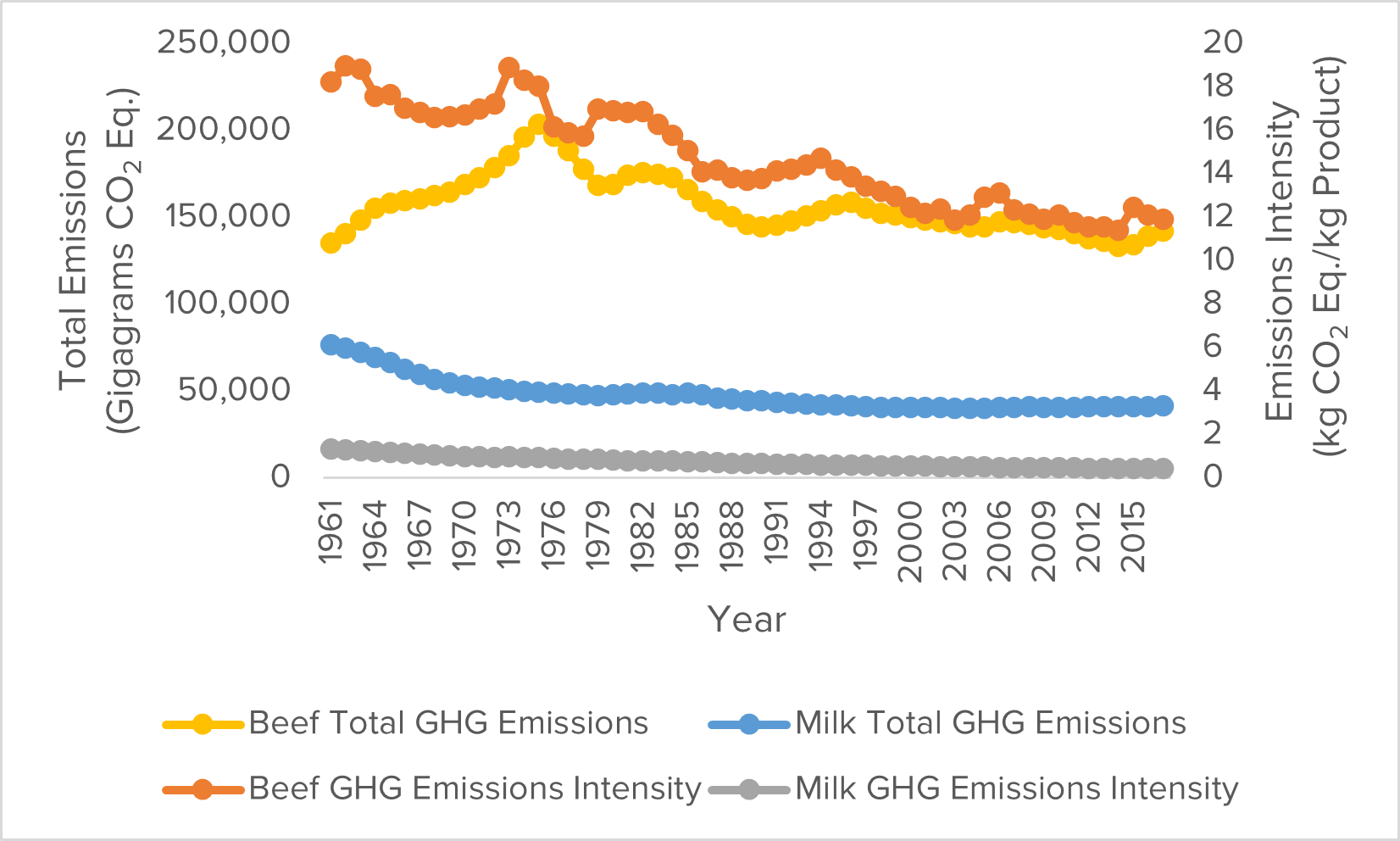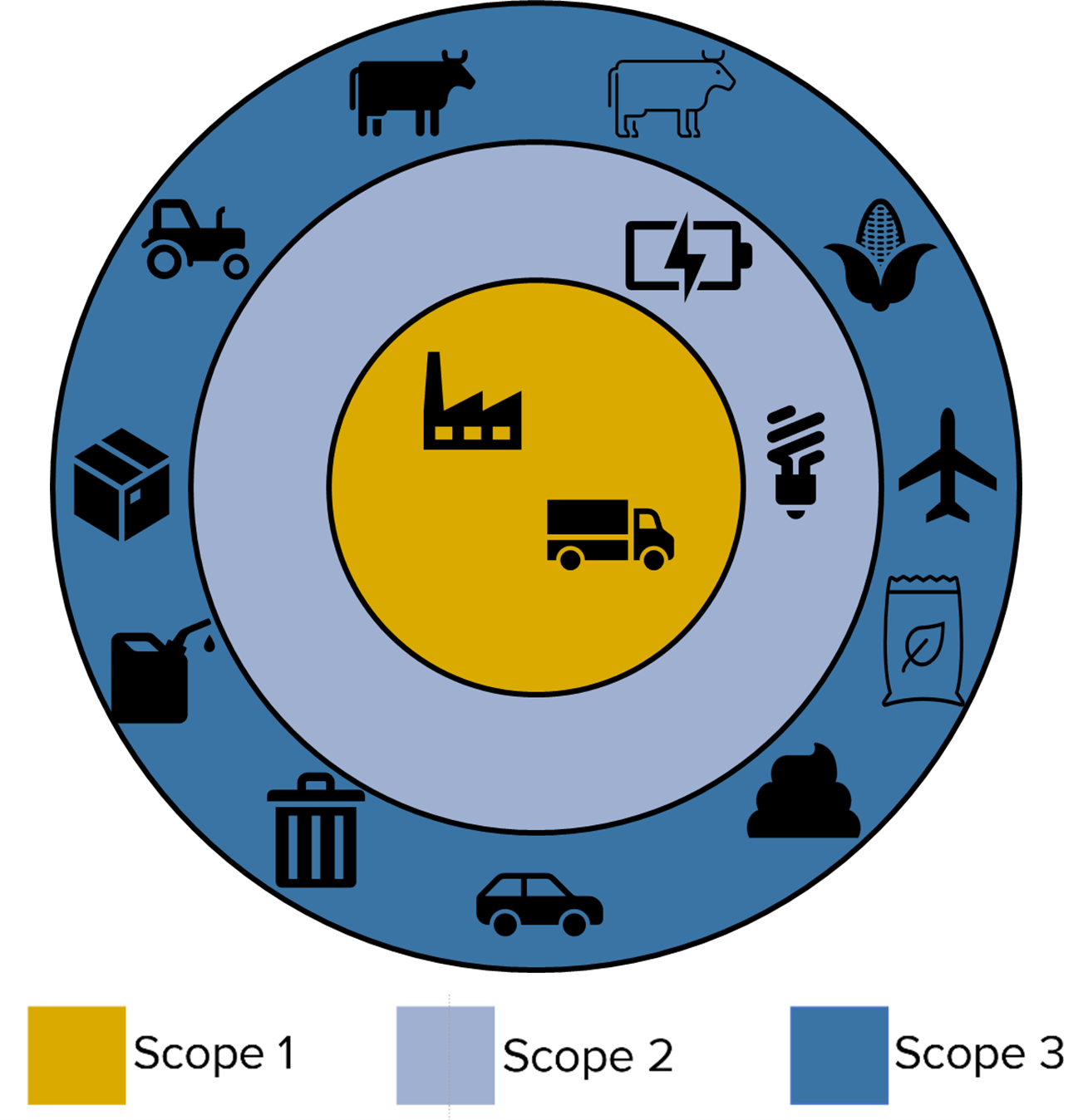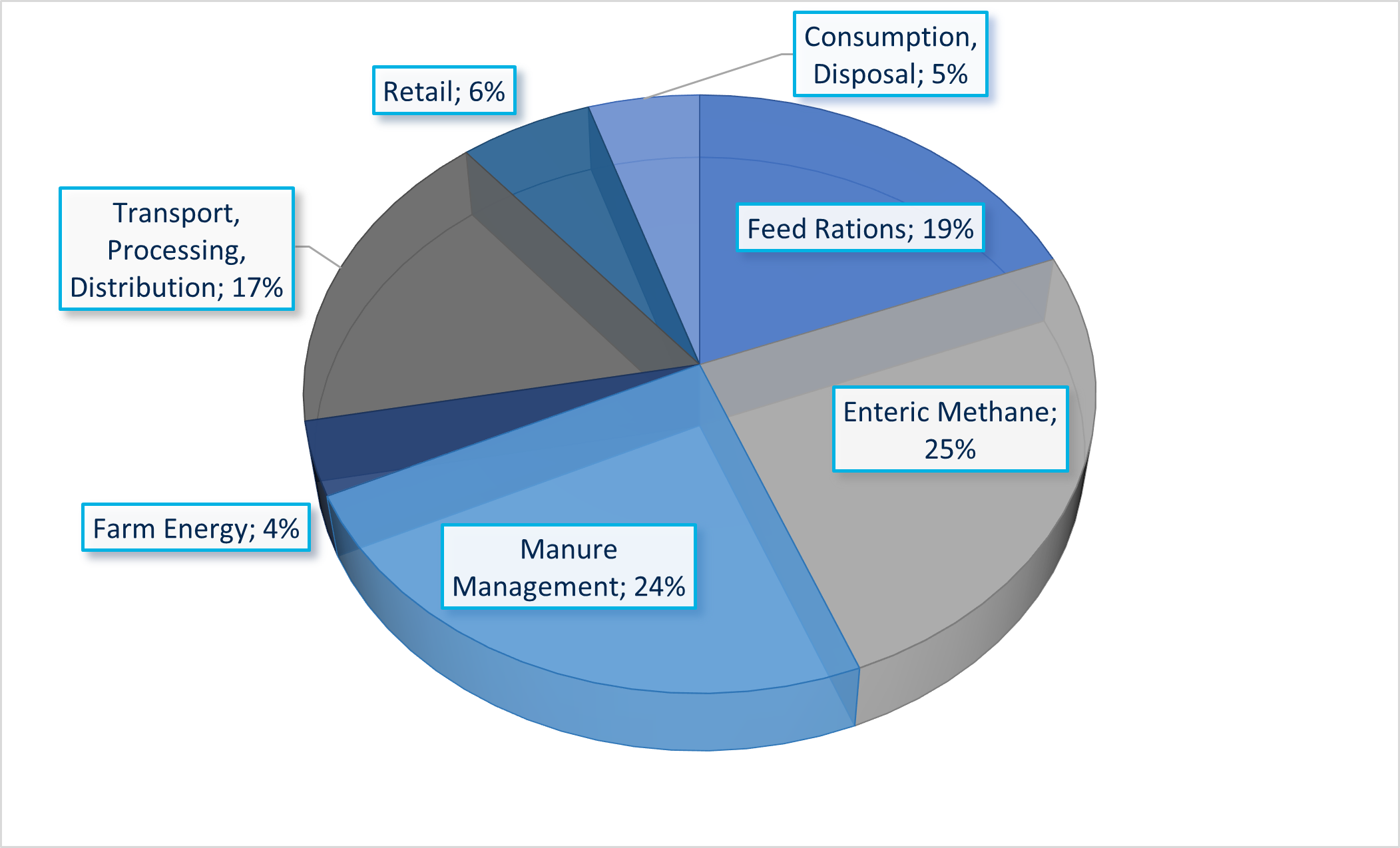
Scoping out Livestock Sustainability Plans in the Beef and Dairy Sector
The COVID-19 pandemic combined with increased attention to climate change, has elevated consumers’ desire for more sustainable food production. As a response to the rising awareness from consumers, several beef and dairy companies have created sustainability plans to reduce the carbon footprint of their production. Although no two plans are exactly the same, they similarly focus on reducing greenhouse gas emissions to meet the international goals set out by the Paris Climate Agreement. But what makes up a sustainability plan and how may they differ?
Industry Commitments
Prior to the COVID pandemic, there was only one North American animal protein company committed to a climate change mitigation target, the Canadian meat packer Maple Leaf Foods. Over the past year, multiple sustainability commitments and plans have been created to reduce companies’ carbon footprints. On the beef processing side, these include JBS, Cargill, and Tyson. Whereas on the dairy side the companies include Land O’Lakes, Dairy Farmers of America, and Glanbia Nutritionals.
When developing a sustainability plan, picking a year as a starting point is important. This is often called a reference year. A future year must be selected by which point whatever milestone mitigation target has been chosen will be achieved – a goal year. An appropriate reference and goal year are necessary to determine the magnitude of greenhouse gas emissions reduction. For example, the State of California has set a goal to reduce methane emissions by 40 percent from 2013 levels by the year 2030. In this case, the year 2013 is the reference year, 2030 is the goal year, and 40 percent is the target emissions reduction. The goal is to drive emissions to net-zero warming whereby no additional warming is added to the atmosphere. Due to methane’s relatively short life span (~10-12 years), methane production from a long-term constant cattle herd size contributes no additional warming to the planet. Producing more pounds of beef or milk per animal reduces the total herd size, the amount of feed needed to sustain those animals, and thus methane production. The same amount of methane is constantly being destroyed in the atmosphere but less is produced due to the smaller herd size, which leads to reductions in the warming footprint of cattle production. However, the pathway for beef or dairy companies to achieve their climate goals is unique and specific to each organization.
There are two commonly used metrics included in sustainability plans, reducing total company emissions, or improving emissions intensity. A reduction in total emissions means a company is reducing the total greenhouse gas emissions associated with production. Lowering emissions intensity refers to reducing the number of greenhouse gas emissions associated with a unit of production. For example, over the previous 60 years, the beef and dairy industry have kept total emissions relatively steady. However, both industries have observed increases in the pounds of beef and milk produced per year. Producing more animal protein with the same number of total emissions has led to a corresponding reduction in both U.S. beef and milk production emissions intensity (Figure 1).

Emission Scopes
The next question then becomes what greenhouse gas emission sources are covered under a sustainability plan. Greenhouse gas emissions at a broad level can belong to three different emission scopes – which categorize types of emissions from an emitter – and are defined by the Environmental Protection Agency (EPA) as scope 1, 2, or 3 (Figure 2). In building outward, the scopes cover emissions that are more indirectly related to beef or milk production.
Scope 1 includes emissions under direct control of the business, such as on-site fossil fuel combustion and fleet fuel consumption. Scope 2 includes the indirect emissions associated with the energy and electricity generation. Finally scope 3 includes the indirect emissions that are not owned by the business but are necessary for production of the good, such as employee travel, commuting, packaging waste, and supply chain management. Figure 2 demonstrates the layout of the emission scopes with further details and examples for a beef or dairy company. It is important to note that the scopes are independent, meaning they do not build on each other, and emissions are only accounted for once when they are assigned to scopes.
Because it is easiest to control the emissions associated with scopes 1 and 2, most sustainability plans include pathways to reduce these emissions. Few sustainability plans focus on reducing scope 3 emissions because of difficulties in controlling, tracking, and monitoring progress in this indirect emissions scope.

Scope 1 Greenhouse Gas Emissions
This scope is the most basic of reported emissions and accounts for all emissions from sources directly owned or directed by the corporation. For beef and dairy companies this includes emissions from everything the company owns such as the plants they operate as well as the animals, farms, or trucks. However, few beef and dairy companies control all parts of production, from the farm to packaging and retail. Thus, most farm operations don’t fall under company scope 1 emissions. Other pieces that can be included in scope 1 include the emissions associated with company owned vehicles or combustion of production plant fuel sources.
Scope 2 Greenhouse Gas Emissions
This scope accounts for emissions not directly associated with the business but those from electricity and energy generation. If a dairy processor is powering their milk or cheese processing plant by coal or natural gas, then the carbon emissions associated from this energy generation would be attributable to the company under scope 2. Therefore, one way a business can reduce its scope 2 emissions is by buying low carbon and/or renewable energy credits or installing renewable energy sources at their sites to decarbonize their power source. As more and more states are moving their electrical grid from petroleum-based power generation to renewables, the majority of companies should be able to meet their respective scope 2 goals.
Scope 3 Greenhouse Gas Emissions
These emissions are the most expansive, most difficult to account for, and can also be the most variable because they include all other indirect emissions that are sourced from outside the company. Notwithstanding, this includes greenhouse gas emissions from employees commuting for work and travel, the transportation of the product from the factory to the consumer level, and the emissions associated with business inputs such as raw materials and equipment. Additionally, this also includes greenhouse gas emissions from all assets that are leased or operated by contractors under the business. By setting targets to reduce a company’s scope 3 emissions, it pressures additional industries to reduce their own carbon footprint. However, businesses may be motivated to include these emissions in their sustainability plan if they pursue net-zero emissions or for corporate social responsibility purposes.
One aspect to note is that most emissions associated with the beef or dairy supply chain are attributed to the farm level. This includes the emission sources of feed production, manure management, and enteric fermentation, which fall under scope 3. In dairy production, just over 70 percent of emissions for every gallon of milk sold are associated with activities at the farm level (Figure 3). On the beef side, the story is similar in that for each pound of boneless beef, over 80 percent of global warming potential and energy consumption is attributable to on-farm practices. Thus, if businesses focus just on their own internal emissions, without addressing scope 3 emissions, most greenhouse gas emissions will be left unaccounted for. Therefore, researchers are looking at possibilities to reduce associated emissions from the on-farm level through the use of feed additives, higher quality pastures, and manure management systems, among other interventions.

Monitoring & Evaluation of Sustainability Plans
While many plans have set forward bold goals for future reductions of meat and dairy’s carbon emissions, ensuring that progress is made is critical. Ideally companies provide a sustainability or corporate social responsibility report at the end of each business year that details progress made on the set goals. This tracking is not only beneficial but provides the opportunity to look at progress over time to ensure that the outlined sustainability goals are being achieved. Over the last several decades, tremendous progress has been made in improved sustainability for beef and dairy production, but much remains to be done as both sectors seek to reach their goals of achieving net-zero warming as per global agreements.
Conor McCabe is a Ph.D. student in Dr. Frank Mitloehner's lab at UC Davis.

The U.S. Beef And Dairy Sectors Can Be Climate Neutral by 2050 – But How?
ContentNew white paper from Frank Mitloehner and Sara E. Place makes the case for focusing on warming impacts in the cattle sectors
